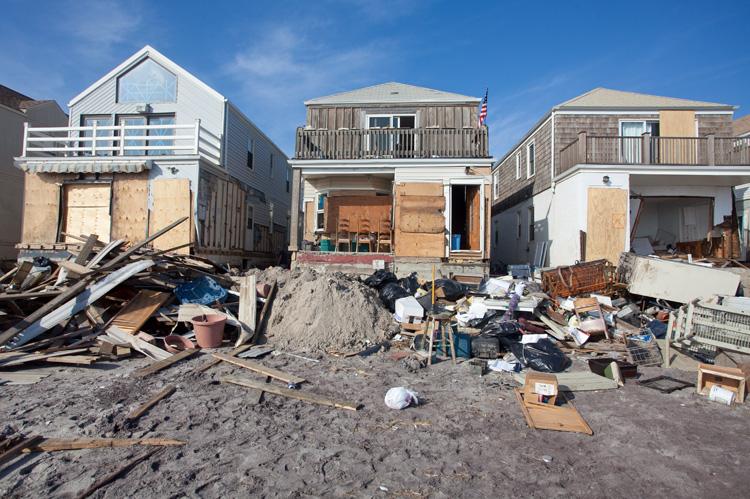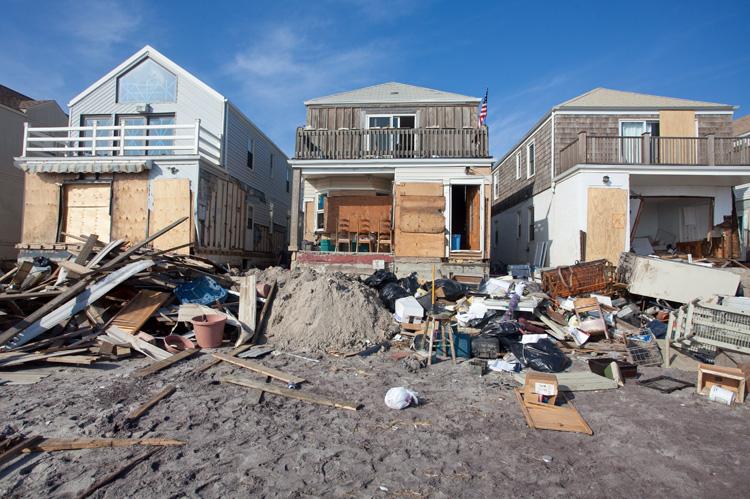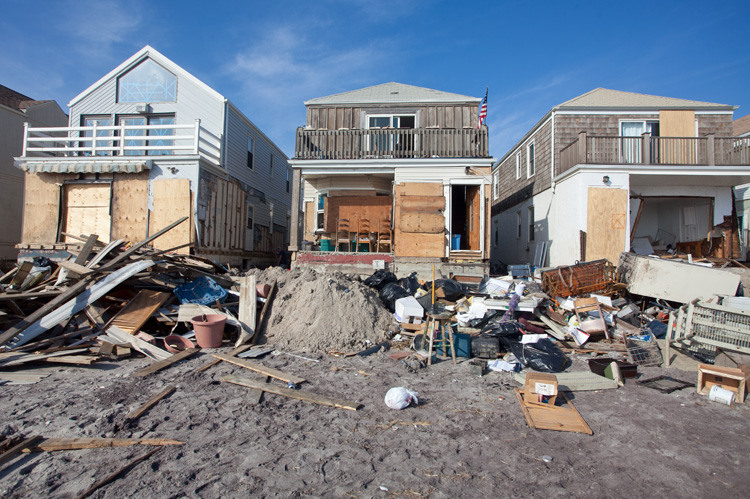In the days of sail and stem, when a boat that had weathered a major storm made it to its home port, it was standard practice to refasten and re-caulk the hull. The boat or ship would be hauled out of the water, the old caulking reefed out, new fasteners added, and the entire vessel re-caulked. Without this care, the vessel would be considered at risk, since the battering she takes in heavy seas stresses everything from the masthead to the keel bolts.
The same should apply to a house or apartment building after a major storm. Post-Sandy, even if things look fine at first glance, it could be that things have been shifted or stressed to the point that they could be leaking or failing—and you might not even be aware of it. Giving your home or apartment a thorough post-Sandy inspection is a must, and you probably already have begun the process to some degree.
A house’s first line of defense against water is the roof. Inspect it. If it means getting on a ladder, make sure it is sturdy, steady, and safe. Get one that is wide and won’t roll; use ladder-leveling legs if you are using it on a slope.
Once you make it to the top and have a good vantage point, take a look for anything that looks loose, bent, or missing. Look at the facia and gutter, making sure that they are still fastened well. Is the ridge intact? If it looks like it could leak, it will eventually. If you need professional help fixing anything dealing with the roof, don’t hesitate to get it. Fixing a damaged roof on your own is one thing, but dealing with wet insulation and damaged sheet rock is another. While you are up there, it may be a good time to clean the gutter if you haven’t already.
Working down from the roof, take a look at the soffit and siding. Make sure the soffit vents are still there and intact. Fixing it is not urgent, since it is winter coming on, but be sure to get at it before the spring when birds and insects are looking for a new place to nest.
Loose siding can just be nailed back down. If you simply drive the old nails back in, though it may look tight it is loose, since the old nail can slide easily in and out now that it has moved in the hole. Adding nails next to the old ones will insure that is stays down. Make sure you use galvanized or stainless nails, preferably ring-shank. They hold far better than smooth nails. If the siding has come loose around window or door trim, it will be necessary to re-caulk it once you have re-nailed it back in place. This may require more ladder work. If so, make sure your ladder is in good condition and that you plant it well each time you move it.
If you have a window-hung air conditioner, make sure it is still mounted securely. It could be that it has been horsed to one side, pulling the screws loose from the side of the building. If so, refasten it with longer screws than what it was fastened with in the first place. This will get new threads into the framing, so it will actually be tight again. Just screwing the old ones back in won’t really do, just as with loose siding.
Work your way down to the foundation and or skirting. Though everything seems more or less okay with your house, be sure to look at the big picture. Is it still sitting correctly on its foundation? Check that the walls are plumb and floors are level. If there are cement walkways around your house, check to see if there are any new cracks.
If you see anything that looks like it is the result of recent movement, make a note of it and keep an eye on it. If you have any water infiltration onto your basement, ask yourself if it could related to foundation damage or damage to the pavement surrounding the home.
Be sure to clean all around your house so you can clearly see the building itself. Leaves or debris against the house is not a good idea anytime, but especially in the winter when it will hold water against the building, which can lead to mold and rot.
When the tempest was howling and the rain driving, did you get any water inside your house despite having closed doors and windows? This would be a good indication that you may have weak or failed weatherstripping. It may also mean that your house just went through a hurricane that obliterated homes less fortunate than yours. It could be a blessing in disguise to show you the places on your home that can benefit from reinforcement or renovation.
Gordon Elliot has over 30 years of experience in working on homes and is on a mission to arm people with the skills and confidence to do home projects they would not have otherwise attempted.





